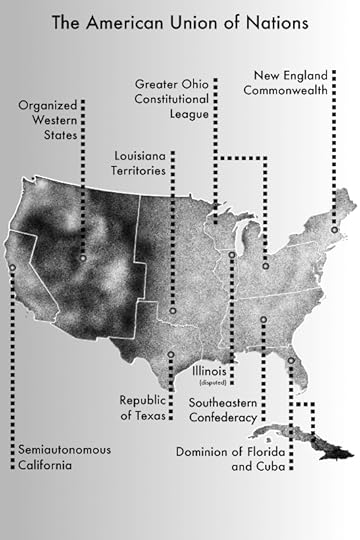Cody Sisco's Blog, page 6
March 18, 2015
Welcome to the “Anthropocene”
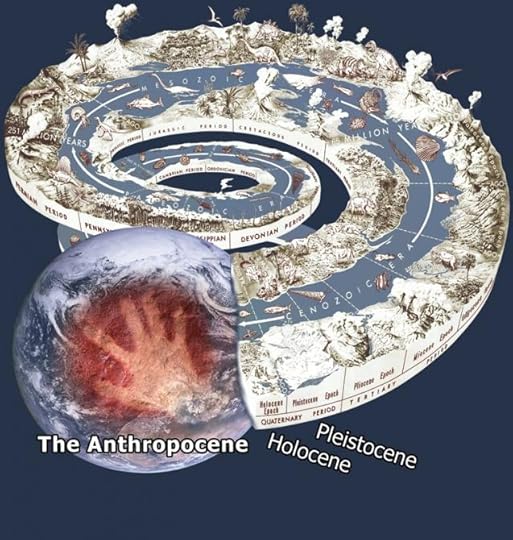 Image Credit: Human Origins Program, adapted from United States Geological Survey, Wikimedia Commons. Public Domain Image http://bit.ly/1BElsOg and Visible Earth, NASA, http://visibleearth.nasa.gov/view.php...
Image Credit: Human Origins Program, adapted from United States Geological Survey, Wikimedia Commons. Public Domain Image http://bit.ly/1BElsOg and Visible Earth, NASA, http://visibleearth.nasa.gov/view.php...Over millions of years, humans have evolved from loose bands of ape-like hunter-gatherers, sharing one corner of the planet with gazelles, elephants, and other exotic animals, to become a dominant force with the power to shape the Earth’s climate, chemical composition, and geology.
It’s been boom times for humanity for millennia:
We number in the billions.
We extensively occupy every continent (save for Antarctica).
Technology enables us to produce and consume vast amounts of energy and resources (mostly by the liquidation of natural capital).
The atmosphere and oceans serve as dumps our industrial byproducts.
Our capabilities should come with equivalent responsibilities, but we’re only beginning to understand our impacts on the Earth and our response is lagging (to put it mildly). Whatever solutions we come up with will have to adapt as our population continues to increase and demands for both basic and “luxury” material goods will increase as well.
The clock is ticking…
Defining the “Anthropocene”
In 2000, writing in the International Geosphere-Biosphere Programme’s Global Change Newsletter, atmospheric chemist Paul J. Crutzen and ecologist Eugene F. Stoermer proposed using the term “Anthropocene” to describe the current geological age. They reviewed the physical evidence, including how humans have transformed landscapes through agriculture and building cities, impacts on greenhouse gas concentrations from burning fossil fuels and raising livestock, and species extinctions. They also traced a line of reasoning dating back more than one hundred years that traced humanity as a key force reshaping Earth’s systems.
Although the term hasn’t yet been officially adopted by geological societies, the debate is running hot, even as the evidence mounts. According to a working group of the International Union of Geological Sciences, the “anthropocene” denotes “the present time interval, in which many geologically significant conditions and processes are profoundly altered by human activities.”
Here are a few key signs that humans are now re-shaping the Earth:
1. Artificial materials
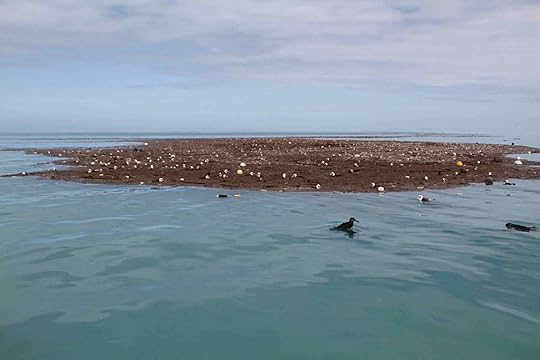 Debris and injured birds
Debris and injured birds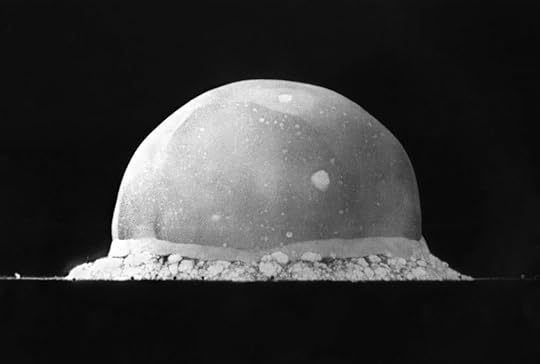 Trinity Site Explosion
Trinity Site ExplosionFrom plastics to radioactive compounds, humans have created substances that did not exist before recent historical times. Traces of these substances will remain in the geological record for eons. Meteor impacts have left globally distributed traces of radioactive isotopes–will the era of atomic warhead testing and plastic pollution of the Anthropocene leave similar imprints?
2. Anthropogenically forced (i.e. human-caused) climate change
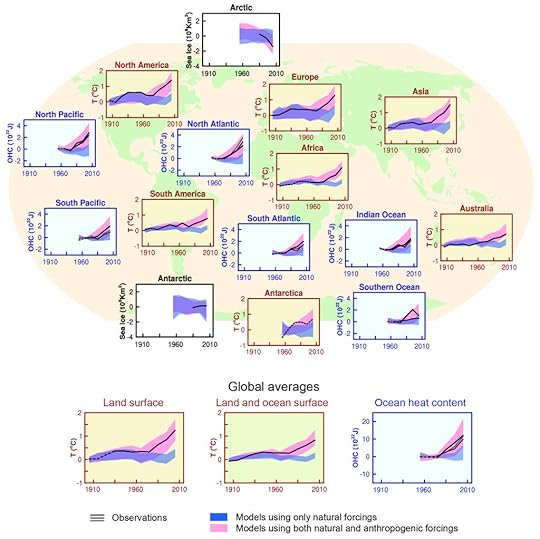 Comparison of observed and simulated climate change based on three large-scale indicators in the atmosphere, the cryosphere and the ocean.
Comparison of observed and simulated climate change based on three large-scale indicators in the atmosphere, the cryosphere and the ocean.By releasing carbon dioxide, methane, and hydrofluorocarbons into the atmosphere and by damaging terrestrial and marine ecosystems that sequester carbon dioxide, we’re changing the balance of heat globally, causing average temperatures to rise (as shown above). The results are frightening and well documented.
3. Changes to the landscape
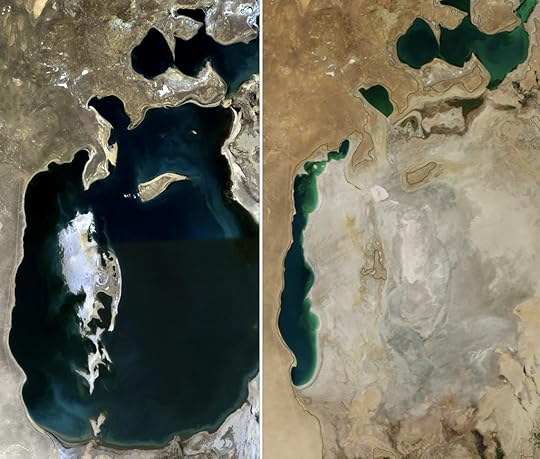 Change in Aral Sea extent, 1989-2014
Change in Aral Sea extent, 1989-2014
Deforestation, watershed engineering (through the construction of dams, dikes, and canals), and the spread of cities are changing the face of the planet. The ecologies that provide us with food, water, and shelter are being degraded. By most accounts, we face a bleak future.
What are our options?
Do nothing and be miserable. (Note: misery will NOT be shared equally–those who are likely to suffer the most are the poor, i.e. those least able to adapt to the changing climate.)
Get on a more sustainable emissions trajectory. This is the mainstream approach that may soon bear fruit after decades of multilateral negotiations and more recent bilateral deals.
Begin to adapt. We’re locked in to some amount of climate change as a result of historical emissions. “Resilience” will be a new keyword for ecosystems and economics. Also, we should probably all start moving inland.
Investigate geoengineering responses to climate change. We can start researching large-scale geoengineering projects that could: 1. Reflect sunlight to cool the Earth, a highly speculative proposition, and 2. Sequester carbon dioxide, a feasible and increasingly mainstream consideration. Both of these options are dramatized in my upcoming novel, Anthropocene.
In any case, expect much more debate about our role in re-shaping the Earth and how we sustain ourselves on this little blue orb for the long term.
June 26, 2014
Map of the American Union
Victor Eastmore’s journey in search of a cure for mirror resonance syndrome takes him from his home in trade union-controlled Semiautonomous California, across the Corp-dominated “wastelands” of the Organized Western States, to the crime-infested plains of the Republic of Texas.
Needless to say the political organization on Resonant Earth’s North American continent differs greatly from our own, yet we can still see commonalities. The northern border of the American Union is nearly identical to the United States of America, if we ignore Alaska. Likewise the main land border with Mexico if virtually identical as well, though we all know that maps can hide as much as they reveal.
March 15, 2014
Mini-Review of Stephen King’s The Wind Through the Keyhole
Stephen King’s return to the world of the Dark Tower, the gunslinger, and his ka-tet is only tangentially related to the epic series.
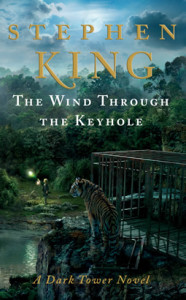 The Wind Through The Keyhole by Stephen King
The Wind Through The Keyhole by Stephen KingThe Wind Through the Keyhole tells a set of nested stories in what is effectively an imaginative rumination on storytelling and what we as readers and storytellers get out of it. Expect monsters and fairy tales. But don’t expect to be horrified, amazed, amused, or anything except slightly touched. Sometimes that’s enough.
March 10, 2014
Resonant Earth History: President Lincoln Survives Assassination Attempt
According to Robbie Eastmore’s “Register of Resonant Earth Discrepancies,” the differences between our worlds are plentiful; however, in the context of North American history, one key event didn’t take place on Resonant Earth.
On the evening of April 14, 1865, Abraham Lincoln survived an assassination attempt.
The Attempt on Lincoln’s Life and Its Aftermath
 After several nights of prophetic dreams depicting his own death, President Lincoln prevailed upon General Ulysses S. Grant to reconsider his rejection of the President’s invitation to the theater. General Grant reluctantly agreed to accompany the President that night, along with their wives.
After several nights of prophetic dreams depicting his own death, President Lincoln prevailed upon General Ulysses S. Grant to reconsider his rejection of the President’s invitation to the theater. General Grant reluctantly agreed to accompany the President that night, along with their wives.
John Wilkes Booth’s first gunshot killed General Grant immediately. His second shot grievously wounded the President, paralyzing him from the waist down. Mary Todd Lincoln and Julia Grant subdued Booth, earning national respect for preventing a worse tragedy.
After the assassination attempt, President Lincoln, who had long suffered from depression and anxiety, and now found himself confined to a wheelchair and suffering from chronic pain, became maniacally focused on dismantling the sources of Confederate power. Slave plantations were partitioned and given away to former slaves. Businesses were seized and turned over to cooperative ownership. Abuses of power and human rights violations against white former elites were common during this period, and federal forces did nothing to stop them.
Eventually, the South regained control over its political destiny, but by then Reconstruction had transformed every institution to be more modern, liberal, and inclusive. Women and former slaves gained the right to vote and full participation in economic and political life many decades earlier than in our world.
Combined with the United States of America’s early retreat from imperial ambitions after a disastrous war with the Spanish in the Philippines, and an even more untenable U.S. occupation of the newly independent nation, Reconstruction led to widespread distrust and a rapid withering of federal power. Over the first few decades of the twentieth century, a movement grew to redefine and repartition American government. A grand bargain was struck in 1935 that consolidated power in eight nation states bound together in an American Union.
May 8, 2013
The Origins of “Victor’s Blood”
Several people have asked me: “Where did you come up with the idea for your novel?”
It’s a fair question. To answer it, I have to take a step back and explain a few things about myself.
The Blessing and Curse of a Strong Imagination
I have an overactive imagination–always have, still do. When I first started going to elementary school (primary school for the non-US based audience), I used to construct elaborate scenarios to liven up my otherwise normal life. Some of the most recurrent were:
I would be kidnapped from school and have to evade or escape the kidnappers.
Our car would go flying off a mountain resulting in a horrible wreck, and perhaps death.
A mysterious portal would open and I would enter a different world, perhaps one with animated characters like in Bedknobs and Broomsticks.
Later, when I was coming into my teenage years, I continued using my imagination to write short snippets of stories, either with a pencil and paper or sometimes with my parents’ typewriter. I also kept a journal. These were healthy expressions of all the images, scenes, and scenarios in my head.
Unhealthily, I was also preoccupied by fears of being bullied and most of my days were organized around getting safely from Point A to Point B without getting harassed by classmates. I dreaded days when I didn’t have a ride home from school because that meant taking the bus (perfect for verbal harassment) or walking home (good for a beating). Every day, I would imagine how I might be threatened, attacked, or ambushed and I imagined how I would respond.
Now that I’m older, bigger, and more secure in my own skin, I have less anxiety and fewer dark predictions for my own future. However, on any given day I’m probably doing one thing and fantasizing about another. It’s just how my brain works. I’m always kind of half here and half somewhere else. Over time, I’ve learned to control this urge and to be more present in the moment. But now I also have an outlet for my imagination: writing.
Drops of “Victor’s Blood”
Which brings me back to the question: “Where did the idea for ‘Victor’s Blood’ come from?”
I’ve had several false starts with writing professionally, some of which are informing my first novel.
Back in 2003, I spent many hours during a vacation in Australia writing “The Marshall Chronicles,” which was a story about a young man with either a personality disorder or an actual evil twin. I’m sure I was inspired by both “Fight Club” and “Youth in Revolt.” This draft was lost during a desktop computer meltdown not long thereafter. But maybe Marshall is resurfacing in Victor?
Sometime in the mid-2000′s, I started seriously plotting a screenplay called “Sharpshooters.” I can’t give away too much of the plot, but there are certainly scenes from those notes the I’ve brought into “Victor’s Blood” and that I will use for the sequels too. Here is the premise:
Sharphooters Premise: network of international research labs into advanced human neurophysiology – Super Human Abilities Research Program – SHARP. The U.S. government turns the war on terror toward superhuman targets.
Timeline for Writing “Victor’s Blood”
I started writing “Victor’s Blood” in the winter of 2011. But I didn’t complete more than thirty pages. Only a few of those words made it into the current manuscript, but the characters and plot elements remain: the story begins with the death of Victor’s grandfather and his attempts to uncover the hidden family history.
It would be most accurate to say “Victor’s Blood” was “born” in August 2012 when I decided to switch careers and to begin writing in earnest. The first draft was completed January 29, 2013, and the rest will soon be history.

March 29, 2013
A Billboard “Windtrap” Produces Water Out of Thin Air
The first billboard that produces potable water from the air. Image courtesy of MAYO DRAFTFCB / UTEC.
Frank Herbert stunned us with his fictional world of Dune and its sandworms, deserts, and complicated political intrigue. One of the coolest bits of tech in the Dune universe were the giant “windtraps” that collected moisture from the air and allowed the Fremen to persist in the desert despite the pesky sandworms and their annoying habit of locking up all the land’s moisture.
Well now we have windtraps on Earth! Check out this video from Lima, Peru that describes a billboard windtrap that creates water for hundreds of families in the area.

March 28, 2013
Rain on the Sun? Video of Sol’s Coronal Rain
The sun exhibits extreme weather: solar flares, sunspots, and stellar wind are part of our popular understanding of the sun’s behavior. But rain? On the sun?
NASA’s Solar Dynamics Observatory satellite recorded stunning footage of a phenomenon called “coronal rain.” Sometimes the plasma ejected from the sun’s surface doesn’t travel very far before it cools and begins to fall back to the surface. Usually, we can’t see this happening. In this instance, the sun’s magnetic field channeled the plasma back to the surface along magnetic lines, which are seen as the arcs of falling material in this video.

February 16, 2013
Stunning Maps of Mercury from Messenger Satellite
This was an exciting week for astronomy!
Today NASA released maps compiled from the Messenger satellite that provide a detailed look at the geology and chemistry of Mercury.
Light blue hues indicate meteor strikes and their ejecta. Yellow hues signify volcanic upwellings. Dark blue areas are mysterious sites where silica-based material appear to be vaporizing and leaving depressions in the landscape. This video below pans across the entire face of Mercury. Enjoy!
Credit: NASA/Johns Hopkins University Applied Physics Laboratory/Carnegie Institution of Washington

February 8, 2013
The Genetic Basis for Coping with Short Term Stress
One protein to rule them all…in times of stress.
The New York Times reports that a study conducted by the Science Education Center at National Taiwan Normal University found a gene linked to how students responded to the stress induced by a national exam that determines high school admissions.
[image error]
COMT Enzyme Structure
The gene in question is called “COMT” and it codes for different versions of an enzyme that regulated dopamine levels in the brain. Some people have a fast-acting version, while others have a slow-acting version, though the majority of people carry both versions in their DNA.
The fast acting version quickly clears dopamine from the brain in times of stress. People with this version of the enzyme experience stress almost as if they’re taking a mental performance enhancing drug, and they are able to focus and reason exceptionally well under the gun. I’ll call them the “thrill-seekers.”
For people with the slow acting version, it’s a different story. When their brains are flooded with dopamine during a stressful event, the enzyme can’t clear the compound fast enough, leading to degraded decision making skills and poor performance. One might call this allele of the gene the “chokes-under-pressure” phenotype.
Interestingly, during times of relatively low stress, the chokes-under-pressure folks actually do better at tasks. Meanwhile, the researchers speculate that for those with the fast acting allele, they needs stress in order to exhibit peak performance– competition, stress, hazards: these folks say “bring it on!”–and during times of low stress, they sleep-walk through tasks without “bringing it.”
So how do we use this knowledge to work with what we got? Chokes-under-pressure students were able to train their minds to react better and reduce the stress they feel in those situations, with improved performance on standardized tests as a result. So stress management becomes crucial for their performance. The thrill-seeker cohort meanwhile can use their competitiveness to their advantage: by turning everyday tasks into games or competitions, they can turn on their nascent capabilities.
What does this mean?
We are on the cusp of unraveling the genetic basis for many kinds of illnesses and for “normal” behaviors. We may be surprised by how many complex behaviors are regulated or influenced by just a few genes. But we may also be frustrated by conditions that are based on many types of genes as well as environmental factors.

February 1, 2013
The North Pole as Blank Canvas: How Frontiers Trigger Psuedo-Scientific Popular Obsessions
There is no shortage of fantastical and horrific scenes at the frontiers of exploration in literature and real life. In space, we have “2001: A Space Odyssey,” the Star Trek franchise, and the terraforming epics of Kim Stanley Robinson. Journey to the Center of the Earth and 20,000 Leagues Under the Sea brought us vivid depictions of what lies under our feet and beneath the waves.
A recent BBC News article explored the history of bizarre expeditions to the Arctic, and even more bizarre hysteria that swept the populations back home.
England’s John Franklin set out to find the Northwest Passage in 1845, but he, two ships, and his crew of 134 men vanished. People reported having visions of the missing captain, and he became a popular request at seances.
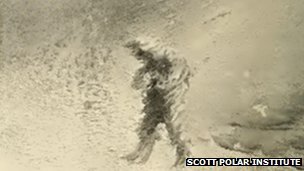
Artwork by Albert Operti (1852-1927)
Albert Operti (1852-1927) painted a number of dramatic and spooky arctic scenes. Russell Potter, Professor of English and Media Studies at Rhode Island College, describes some of Operti’s works on his blog.
There is a great quote in the BBC article from Dr Shane McCorristine, a cultural historian at the Scott Polar Research Institute:
“People describe fluttering, rustling noises emanating from the distant sky – which science tells us can’t be the case, but indigenous people have accepted for hundreds of years as the sound of dead souls,” he says.
“As much as Western explorers and scientists take a purely empirical approach, trying to disenchant native beliefs, there is always something they can’t explain which irritates and haunts them.”
“When you combine extreme landscapes with complicated human beings, strange things can happen. For example, on Shackleton’s march across South Georgia during his famous Antarctic expedition, all three of the team reported feeling the presence of an extra, fourth man near them at all times.”


